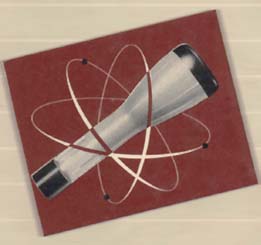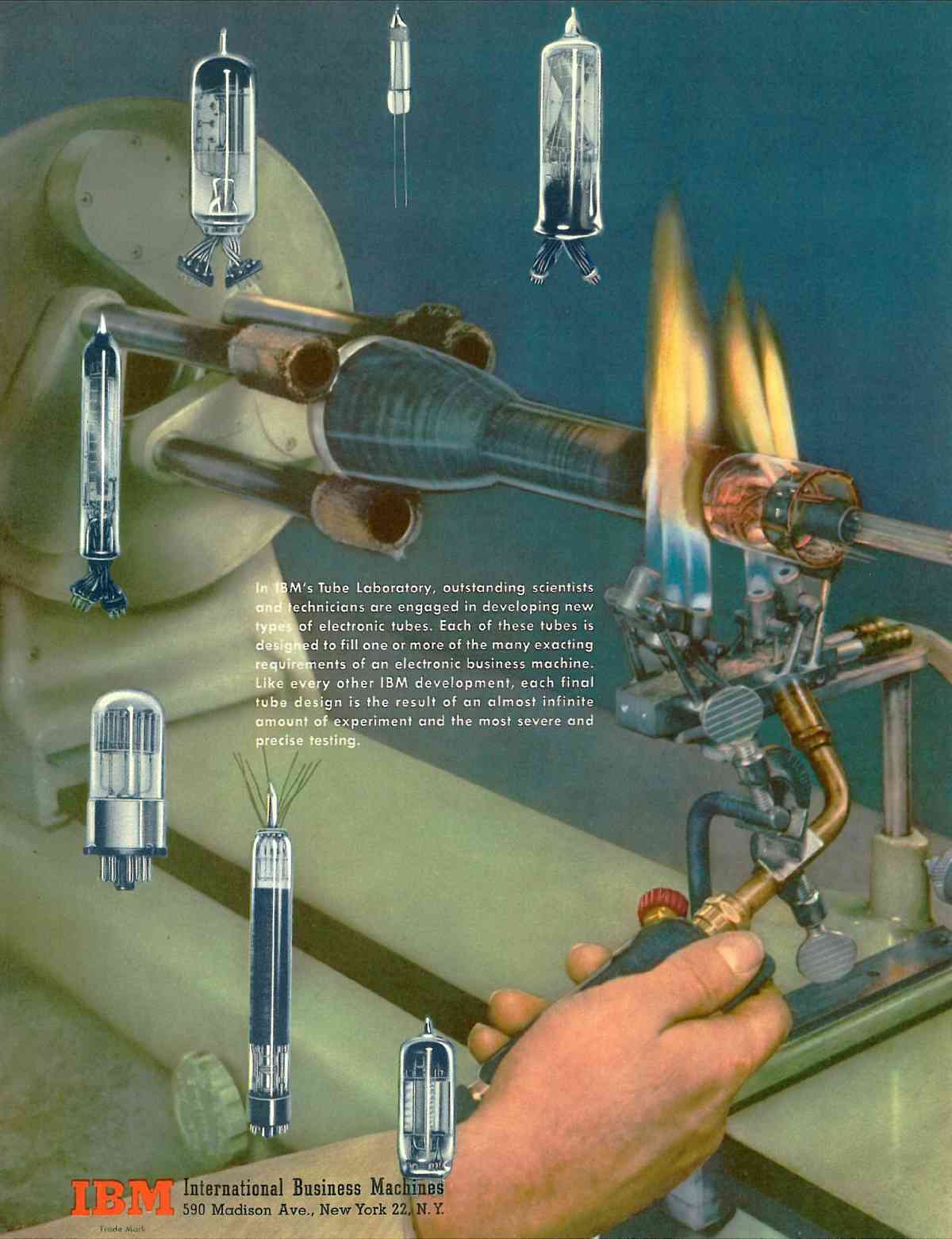The RCA Selectron -- The people of IBM


IBM evaluated the Selectron for
use as the memory in its type
701 Electronic Calculator.
Ultimately, the decision was made that the main storage unit would be implemented with a
Williams-Kilburn
principle storage cathode ray tube system.
The 706 Electrostatic Store
was the main memory for the 701 and
702 computers.

This type of CRT was the basis for the 701's official logo.
(And no, there was no lithium involved -- the graphic of three orbital electrons was just the 1950's way of saying,
"We're Modern!" and not a warning of, "Danger! Radioactive Alkali Metals Inside!")
The commonly accepted reasons for the decision not to use the Selectron was that the device itself was
too complex,
the price RCA set per device was too high for IBMs projections,
it was a sole-sourced technology still not proved in field use,
and the small storage capacity of 256-bits would require 288 SB256 Selectrons.
RCA did (initially) supply the conventional 5-inch CRTs to IBM for the project.
IBM began building its own CRTs
in house because the performance from
vendor supplied tubes was insufficient for both yield and lifetime.
IBM has long held sufficient clout in the electronics industry to "force" compliance with their requirements.
In circumstances where the external market will not -- or can not -- meet the needs, IBM would do it themselves.*
Setting up in-house production of conventional CRTs is not a foolish task;
Building Selectrons internal to IBM would have been a daunting and time consuming chore.
This may have been the key point that ultimately swayed IBM away from using the proprietary RCA Selectron.
Meanwhile, Arthur L. Samuel was leading the development of tube and tube circuit development at IBM while also
leading research into the applications of the newly invented transistor.
IBM's Tube Laboratory in Poughkeepsie was housed in a building
formerly used for pickle processing by the R. U. Delapenha Company,
earning it the nickname The Pickle Factory.
By 1954, and the introduction of the type
704
computer, the electrostatic store had been replaced by magnetic core memories.
Although the common attribution for the invention of the magnetic core
memory goes to MIT's Jay Forrester , significant and simultaneous R & D contribution to
the art was being performed at MIT by William Papian,
by L. H. Thomas at Columbia University's Watson Lab, and by Harvard Computation Laboratory's An Wang...and RCA's
Jan Rajchman -- the developer of the Selectron.

1952 brochure ©Copyright IBM Corporation, All Rights Reserved
* This author has first hand knowledge of IBM's power in the marketplace:
A major manufacturer of electronic test equipment was not being altogether compliant in designing a new oscilloscope
with the features and performance requested by IBM.
Eventually the IBM team suggested that it might be more effective and economical to simply build
their own 'scopes internally.
The oscilloscope manufacturer eventually "chose" to meet the needs and desires of Big Blue
in the design of the new products.
This family of instruments went on to become the most successful line of oscilloscopes ever sold
in the electronics industry.
Name Gleaner -- This section is written to allow search engines to find the common
variations of names such as one and two intitials both pre- and post-family name.
N Rochester Nathaniel Rochester N Naty Rochester
A L Samuel Arthur L Samuel A L
F Williams F C Williams Freddie Williams Frederick Sir Freddie Williams
T Kilburn T Kilburn Tom Kilburn
Jay Forrester Jay W Forrester
William Papian William
An Wang An
J C Logue J C
L H Thomas L H Llewellen Hilleth Thomas Llewellen Hilleth
D B Thompson D B
F A Weber F A
C Kneen Charles Kneen C



 Back to Selectron Home
Back to Selectron Home